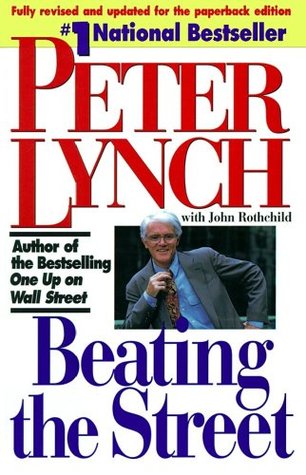More on this book
Community
Kindle Notes & Highlights
you remember 2,000 stock symbols but forget the children’s birthdays, there’s a good chance you’ve become too wrapped up in your work.
history shows that over a long period of time assets will grow much faster when they are 100 percent invested in stocks. The retirement account is the perfect place for stocks, because the money can sit there and grow for 10 to 30 years.
amateur who devotes a small amount of study to companies in an industry he or she knows something about can outperform 95 percent of the paid experts who manage the mutual funds, plus have fun in doing it.
theoretically it makes no sense to put any money into bonds, even if you do need income.
In letters to the shareholders, I warned of Magellan’s tendency to get swamped in choppy waters, on the theory that when people are prepared for something it may disturb them, but it won’t unnerve them.
The easiest approach is to divide up your money into six equal parts, buy six funds, and be done with the exercise. With new money to invest, repeat the process.
How do you choose a value fund, growth fund, or capital appreciation fund that will outdo its rivals?
sector funds, convertible funds, closed-end funds, and country funds.
mutual fund strategies: • Put as much of your money into stock funds as you can. Even if you need income, you will be better off in the long run to own dividend-paying stocks and to occasionally dip into capital as an income substitute.
Know what kinds of stock funds you own. When evaluating performance, compare apples to apples, i.e., value funds to value funds. Don’t blame a gold-fund manager for failing to outperform a growth stock fund.
It’s best to divide your money among three or four types of stock funds (growth, value, emerging growth, etc.) so you’ll always have some money invested in the most profitable sector of the market.
Concentrate on solid performers and stick with those.
The extravagance of any corporate office is directly proportional to management’s reluctance to reward the shareholders.
described my strategy as follows: “Reduced holdings in autos, aerospace, railroads, pollution, utilities, chemicals, electronics, and energy; added to positions in financial institutions, broadcasting, entertainment, insurance, banking and finance, consumer products, lodging, and leasing.” All this for a ten-month stint on a $20 million portfolio with fewer than 50 stocks!
“pulling out the flowers and watering the weeds,”
I always look for banks that have a strong local deposit base, and are efficient and careful commercial lenders.
To avoid undermining one another’s confidence, we allowed no feedback at our presentations—the listeners were free to follow up on the leads or ignore them as they chose.
If earnings increase 20 percent per annum, they double in 3½ years and quadruple in 7.
The Rule of 72 is useful in determining how fast money will grow. Take the annual return from any investment, expressed as a percentage, and divide it into 72. The result is the number of years it will take to double your money. With a 25 percent return, your money doubles in less than 3 years: with a 15 percent return, it doubles in less than 5.


